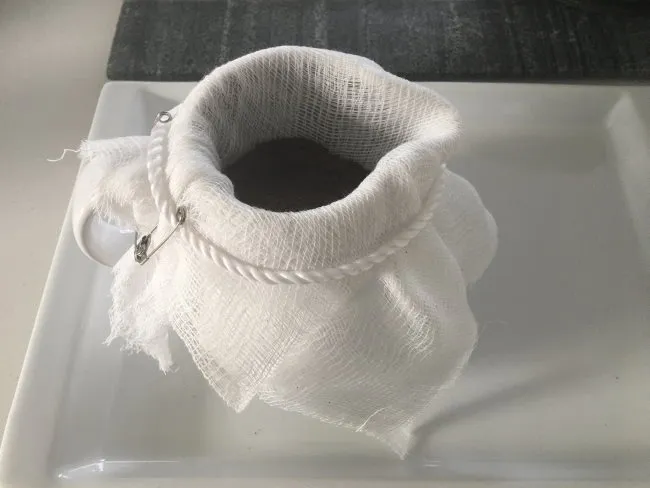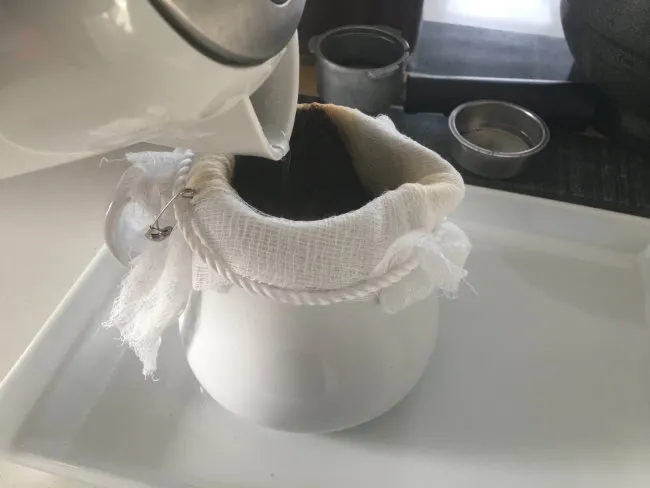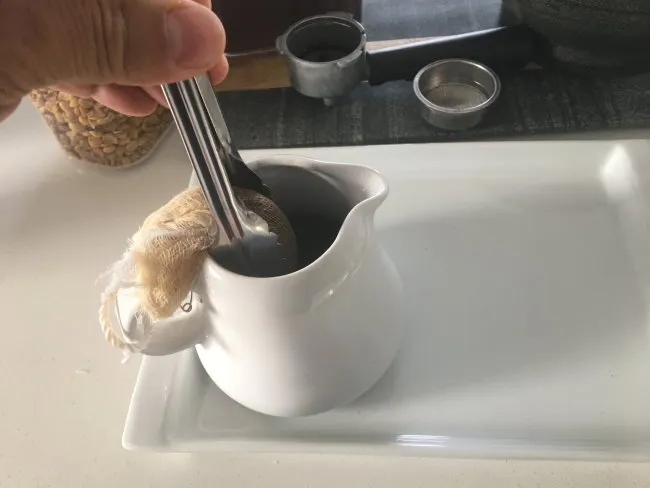by Allen J Pais

My life is dedicated to coffee growth, cultivation, and re-discovering the past in relation to the various methods of coffee brewing. I capture the past with faint memories of my mother preparing coffee. These memories help me recreate methods of coffee brewing. Then, I rehearsed the same scenario, and I got to know a perfect method of how we brewed coffee in the past.
History
It was around 1975 when I would see my mother get up early in the morning to prepare pour-over coffee. She used a medium-sized copper vessel, covering the top of the vessel with a muslin cloth tied to the brim of the vessel. That cloth would cover, strain, and filter the coffee grinds. She used a pre-ground coffee powder made of a mixture of roasted Robusta and Arabica. Depending on the number of members in the house, she would put a few tablespoons onto the cloth area that was immersed in the vessel.
My mother would heat hot water using a kettle made of aluminum. The kettle was heated using a wood fire and the stovetop was designed by my dad to heat water for bathing, which was stored in an oil drum, that had an outlet to a cooktop. The water was drawn out from the well.
Once the water was heated, she would pour the hot water from the kettle’s goose-necked spout on top of the coffee grinds in a circular motion. After waiting for 3 to 5 minutes, the cloth would be removed and squeezed by hand using a serving spoon to get every drop of the coffee brew. There would be a cake of coffee-soaked grounds left inside the cloth which was thrown away below the plants as compost. Finally, the coffee decoction would be available in the vessel.
I remember the flavor was rich with coffee brew aroma, as it was poured into small ceramic or steel cups. With the addition of milk and sugar to taste, the end result was a lovely cup of coffee every day early in the morning.
Let us make some coffee.
The Pour-over Coffee Method using a cloth
Re-Creating & Demonstrating, 1975 (45 years ago) Coffee brewing process in 2020.
#1 Grind Coffee
Place one tablespoon of ground coffee powder for each cup of coffee you wish to make. I normally powder grind my coffee bean using a mortar and pestle. I use an 80% Arabica and 20% Robusta blend. Use whatever coffee or blend you prefer.

#2 Prepare a Muslin Cloth
Prepare a white muslin cloth or a multipurpose cheesecloth for your vessel or ceramic pot.

#3 Add Coffee Grinds on top of the Cloth
Verify the cloth is secured correctly on the brim with a thread, then push the cloth down to be able to hold the grinds and poured hot water.

#4 Add hot water to coffee grounds
Pour hot water in a circular motion, and protect yourself from coming in contact with hot water. Once the water drains through the cloth into the pot, it is time to squeeze the remaining coffee. The process of pouring hot water and transferring the hot coffee into a cup is approximately 3-5 minutes.

#5 Squeeze the Coffee Grind Cloth
Use kitchen tongs to squeeze the cloth and strain the coffee brew if required.

#6 Pour the Coffee decoction into a Ceramic Cup
Gently pour the Coffee decoction into a cup. You can use a strainer if required. Throw away the remaining soaked grinds into your garden pot. The cloth can be reused by rinsing it with clean water.

#7 Add milk and sugar to taste
Add milk and sugar to taste. You can reheat the coffee if required. Store the remaining grinds in a well-sealed container.

I am dedicating this article to my Dad, Late- Patrick Albert Pais 1934-1998.
Video Tutorial
How To Make Pour-Over Coffee Using A Cloth
Resources
Brewing Coffee With the Coffee Sock – A similar coffee brewing method.
How To Make Coffee Using A Thermos Flask – Another brewing tutorial by Allen Pais.